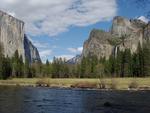NPS Implements 2010 Sea Turtle "Nest Watch" Volunteer Program
Date: August 5, 2010
Contact: Cyndy Holda, 252-473-2111, ext. 148
Contact: Katy McCurdy, 252-995-6968
Superintendent Mike Murray announced today the return of the sea turtle “Nest Watch” volunteer program for the Cape Hatteras National Seashore 2010 summer/fall sea turtle season. Under the direction of Resource Management staff, the goal of the Volunteer Park (VIP) program is to ensure the successful hatching of sea turtle hatchlings as they emerge from their nests and make their way to the ocean. In addition, this program with provide visitors with a valuable educational experience and neighboring communities an opportunity to participate in sea turtle conservation and management.
The annual program will assist the National Park Service (NPS) in monitoring sea turtle nests that have reached the point where hatching is imminent. Volunteers are needed and will be trained to assist NPS biologists with monitoring nest sites, educating the general public about sea turtle management, installing and maintaining closures, handling hatchlings, and assisting with excavations.
There are three species of sea turtles that nest within Cape Hatteras National Seashore; the loggerhead, green, and leatherback. All of these species are federally listed as either threatened or endangered. Each year from May through September, park employees conduct daily patrols to find the nests and protect them. Nests begin to hatch after 50 days of incubation, which generally begins in late July and can continue into November. When emerging from their nests, hatchlings face many obstacles on the beach, including the threat of artificial lighting which leads them away from the water, as well as beach furniture, trash, fire pits, or other human related impediments that may obstruct the hatchling’s path. These obstacles may increase prolonged exposure on the beach for hatchlings making them more susceptible to predation from ghost crabs and other predators.
Weekly visitors are welcome to observe training classes while interested VIPs are asked to commit to a certain number of hours. If anyone is interested in becoming a VIP for this program and attending the training, please call Katy McCurdy at 252-995-6968 or 252-216-7829, and leave contact information.
NPS Implements 2010 Sea Turtle "Nest Watch" Volunteer Program
All posts are those of the individual authors and the owner
of this site does not endorse them. Content should be considered opinion
and not fact until verified independently.
Sorry, only registered users may post in this forum.


